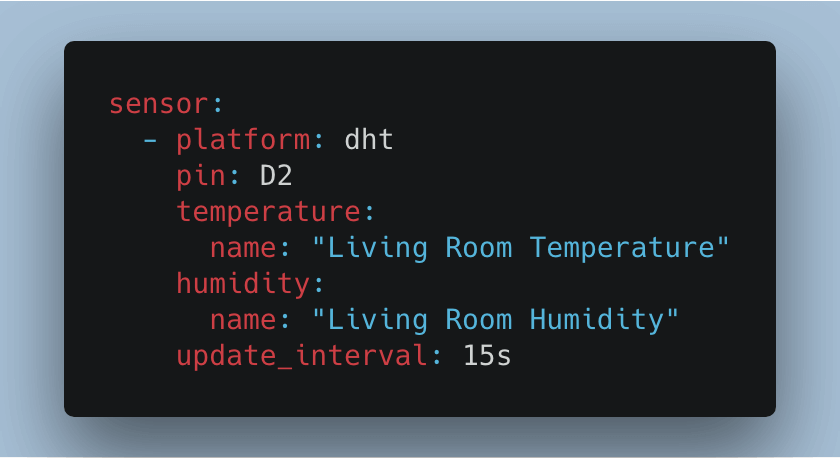4 KiB
Esphomeyaml HassIO Add-On
WARNING! THIS IS AN EDGE VERSION!
You're viewing the edge (latest build) of the esphomeyaml add-on. This contains the latest source code with all the latest features. However, the code in this version of the add-on is unstable and might break at any moment.
It is intended for:
- people who want to test the latest features.
- people who can manually re-flash their node via USB if something breaks.
- Developers
About
This add-on allows you to manage and program your ESP8266 and ESP32 based microcontrollers directly through HassIO with no programming experience required. All you need to do is write YAML configuration files; the rest (over-the-air updates, compiling) is all handled by esphomeyaml.
View the esphomeyaml documentation here
Example
With esphomeyaml, you can go from a few lines of YAML straight to a custom-made firmware. For example, to include a DHT22 temperature and humidity sensor, you just need to include 8 lines of YAML in your configuration file:
Then just click UPLOAD and the sensor will magically appear in Home Assistant:
Installation
To install this HassIO add-on you need to add the esphomeyaml add-on repository first:
- [Add esphomeyaml's HassIO add-ons repository][https://github.com/OttoWinter/esphomeyaml] to your HassIO instance. You can do this by navigating to the "Add-on Store" tab in the HassIO panel and then entering https://github.com/OttoWinter/esphomeyaml in the "Add new repository by URL" field.
- Now scroll down to the bottom of the page and select the "esphomeyaml-edge" add-on.
- Press install to download the add-on and unpack it on your machine. This can take some time.
- Optional: If you're using SSL certificates and want to encrypt your communication to this add-on, please enter
trueinto thesslfield and set thefullchainandcertfileoptions accordingly. - Start the add-on, check the logs of the add-on to see if everything went well.
- Click "OPEN WEB UI" to open the esphomeyaml dashboard. You will be asked for your Home Assistant credentials - esphomeyaml uses HassIO's authentication system to log you in.
NOTE: Installation on RPis running in 64-bit mode is currently not possible. Please use the 32-bit variant of HassOS instead.
You can view the esphomeyaml docs here: https://esphomelib.com/esphomeyaml/index.html
Configuration
Note: Remember to restart the add-on when the configuration is changed.
Example add-on configuration:
{
"ssl": false,
"certfile": "fullchain.pem",
"keyfile": "privkey.pem"
}
Option: ssl
Enables/Disables encrypted SSL (HTTPS) connections to the web server of this add-on. Set it to true to encrypt communications, false otherwise. Please note that if you set this to true you must also specify a certfile and keyfile.
Option: certfile
The certificate file to use for SSL.
Note: The file MUST be stored in /ssl/, which is the default for Hass.io
Option: keyfile
The private key file to use for SSL.
Note: The file MUST be stored in /ssl/, which is the default for Hass.io
Option: leave_front_door_open
Adding this option to the add-on configuration allows you to disable
authentication by setting it to true.
Embedding into Home Assistant
It is possible to embed the esphomeyaml dashboard directly into
Home Assistant, allowing you to access your ESP nodes through
the Home Assistant frontend using the panel_iframe component.
Example configuration:
panel_iframe:
esphomeyaml:
title: esphomeyaml Dashboard
icon: mdi:code-brackets
url: https://addres.to.your.hass.io:6052



